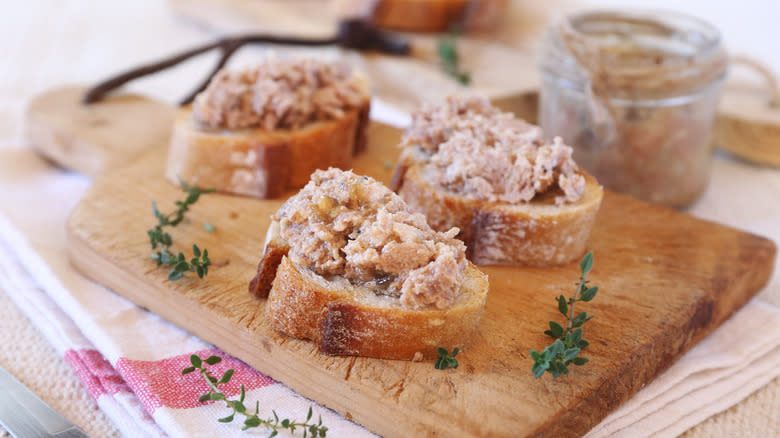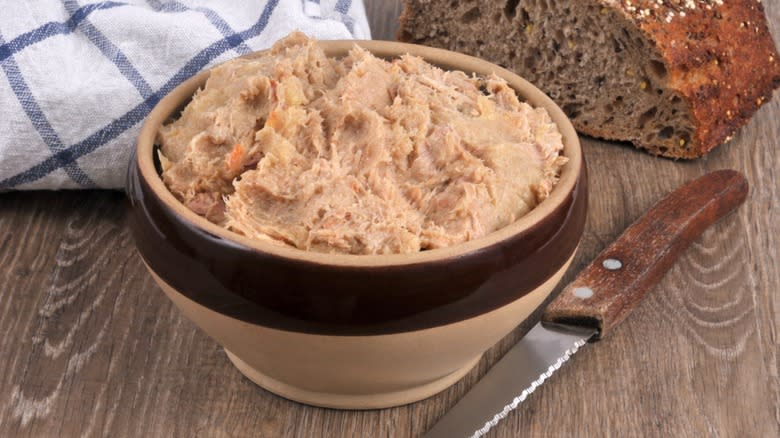What Cut Of Meat Usually Makes Up Pork Rillettes?

Pork rillettes, a rustic French culinary delight, stands as a testament to the sublime marriage of simplicity and indulgence. This delectable spread boasts a texture that is lusciously rich, smooth, and utterly satisfying. But, with so many delicious cuts of pork to choose from, it can be hard to know which is right for pork rillettes. To craft this gastronomic indulgence, reach for well-marbled pork shoulder, an economical and easy-to-find cut that is perfect for this porcine masterpiece.
The magic of pork rillettes lies in its decadent, melt-in-your-mouth consistency, which is achieved through the slow-cooking confit process. Pork shoulder, also known as pork butt or Boston butt, is an ideal candidate for this culinary adventure due to its inherent richness, bountiful connective tissue, and generous fat content. The marbled nature of pork shoulder ensures that the meat remains succulent and tender during the slow-cooking process, whereas leaner cuts like pork tenderloin would be rendered dry and grainy when confited.
Pork shoulder's abundance of intramuscular fat not only contributes to the sumptuous mouthfeel but also plays a crucial role in conveying the flavors of the rillettes. As the meat cooks gently, the pork fat absorbs the essence of added herbs and aromatics. This fat becomes a reservoir of flavor, enrobing the tender meat. In essence, pork shoulder provides the canvas upon which the masterpiece of pork rillettes is painted, ensuring a culinary experience that is nothing short of divine.
Read more: 8 Absolute Best Cuts Of Meat To Deep Fry
Simple And Satisfying

The surprisingly easy slow-cooking confit method is the culinary alchemy responsible for this metamorphosis, as the pork shoulder takes a leisurely journey in a low oven submerged in its own luxurious bath of pork fat. Simply pack seasoned chunks of boneless pork shoulder into a high-walled Dutch oven or enamel casserole dish with your choice of aromatics and enough melted pork lard to cover -- remember, pork shoulder contributes plenty of its own fat -- and let the gentle heat of the oven work its magic.
As the pork shoulder slowly confits, it absorbs the flavors of added ingredients such as garlic, bay leaves, and thyme, enhancing the depth and complexity of the final product. The low and slow cooking method allows the meat to gently break down, ensuring that the fat and connective tissue meld into a velvety amalgamation. This is important for the critical next step of the rillettes-making process.
After the slow-cooking process and a cooling-off period, the aromatics and any gristle are discarded, and the tender pork shoulder meat is shredded and then whipped with enough of the reserved fat and cooking juices to form a paste. Once a smooth, spreadable consistency is reached, the pork rillettes can be savored on crusty chunks of baguette, crispy crostini, or humble crackers. The end product keeps well refrigerated but should be allowed to warm slightly before serving to ensure that the rillettes are softened enough to be spreadable.
Read the original article on Tasting Table.

